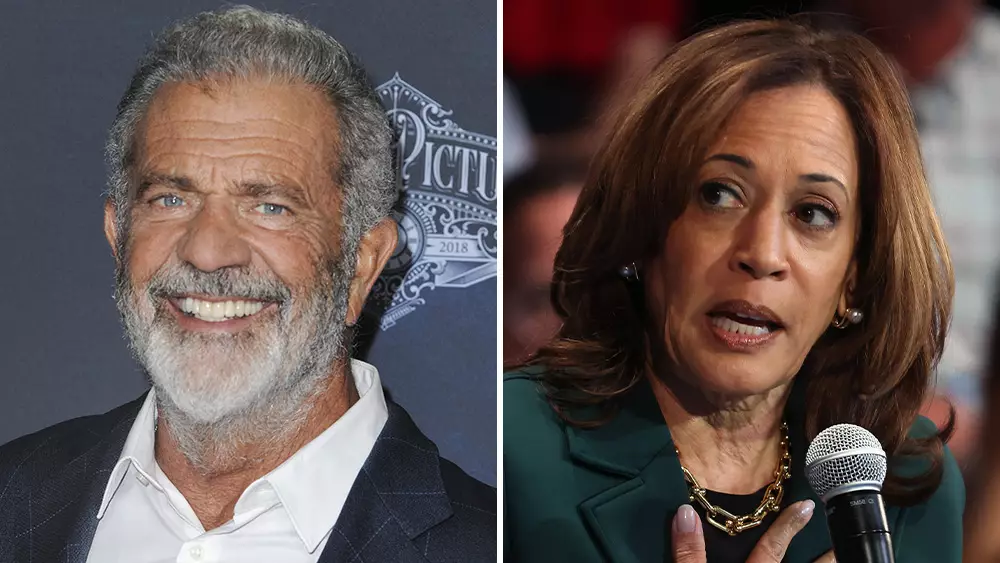In a recent turn of events, actor Andrew Garfield expressed admiration for Mel Gibson, praising the director’s so-called “beautiful healing” over the years. However, this sentiment might take a hit, given Gibson’s recent controversial comments. The dichotomy between Garfield’s glowing remarks and Gibson’s inflammatory statements presents a critical examination of the reputations that celebrities can uphold and the pitfalls that often characterize their actions.
Gibson, caught on video at LAX making disparaging remarks about Vice President Kamala Harris, claimed she possessed the “IQ of a fence post” while announcing his support for Donald Trump’s return to the presidency. His statements raised eyebrows, particularly in light of his contentious history, which includes various episodes of public misconduct. For Garfield, the juxtaposition of admiration for a figure with such a cloudy past becomes problematic. It prompts the question: can rehabilitation come from tales of personal growth while simultaneously being overshadowed by harmful rhetoric?
Gibson’s recent comments about Harris are only a snapshot of a much larger picture. His storied career has been marred by a series of public incidents, each compounding the last. He has oscillated between being celebrated for his directorial talent—as evidenced by films like “Hacksaw Ridge”—and reviled for his bigoted expressions and alarming behavior, including a notorious DUI arrest in 2006. During this incident, he directed a tirade of antisemitic remarks at a female police officer; remarks he later attempted to apologize for, but the damage had already permeated public perception.
Moreover, Gibson’s attitude towards women and people of different backgrounds has often surfaced in various contexts. For example, Winona Ryder’s recount of Gibson’s supposed comments at a Hollywood party only solidifies the longstanding critique of his character. The ability to compartmentalize an artist’s genius from personal failings is a complex discourse that society continually engages in. Can one enjoy a film while being fully aware of the ethically questionable conduct of its creator?
Public Figures and Unfiltered Views: The Social Media Divide
The rise of social media has intensified the scrutiny placed on public figures. Gibson’s remarks about Vice President Harris echo sentiments shared by former President Trump, who has routinely attacked her intelligence. These statements have become focal points in the political arena, influencing public discourse and, unfortunately, further polarizing an already divided society. Consequently, the implications of Gibson’s words transcend mere insults; they intertwine with a broader narrative about acceptable commentary in contemporary political dialogue.
As individuals like Gibson gain traction in expressing such views, one must also consider the responsibility that comes with celebrity status. The impact of their opinions can ripple outwards, influencing their fans and followers. Gibson’s objectionable disdain for Harris serves to reinforce negative stereotypes and bolster harmful narratives that can proliferate in the media, thus necessitating a critical approach to how we revere talent while questioning the morals that might accompany it.
What makes Gibson’s continuing popularity more interesting is the notion of redemption in celebrity culture. Despite the critical eye directed at his past indiscretions, he remains an influential figure, with prominent actors like Garfield willing to overlook or reframe those incidents as something formative rather than damning. This raises broader societal questions: should individuals in the public eye receive the opportunity for forgiveness, or should their past actions define how they are perceived indefinitely?
The conversation surrounding Mel Gibson opens a broader dialogue about the intersections of art, morality, and society’s redemption ethos. Cases like his elucidate the challenges faced by public figures, who often oscillate between being lauded for their creativity and reprimanded for their personal behaviors. As society navigates these complexities, it remains imperative to pursue discussions that hold great figures accountable while also allowing for the potential for growth. In the end, the ability to separate the artist from the art continues to be debated in light of an ethical framework that many still struggle to define.


Leave a Reply